フィールド日記
2024.08.13
イヌザンショウ
イヌザンショウが咲いています。サンショウにとても似ていますが、サンショウに比べて香りが良くないため、食用には利用されません。サンショウは春に咲くのに対し、イヌザンショウは夏に咲きます。
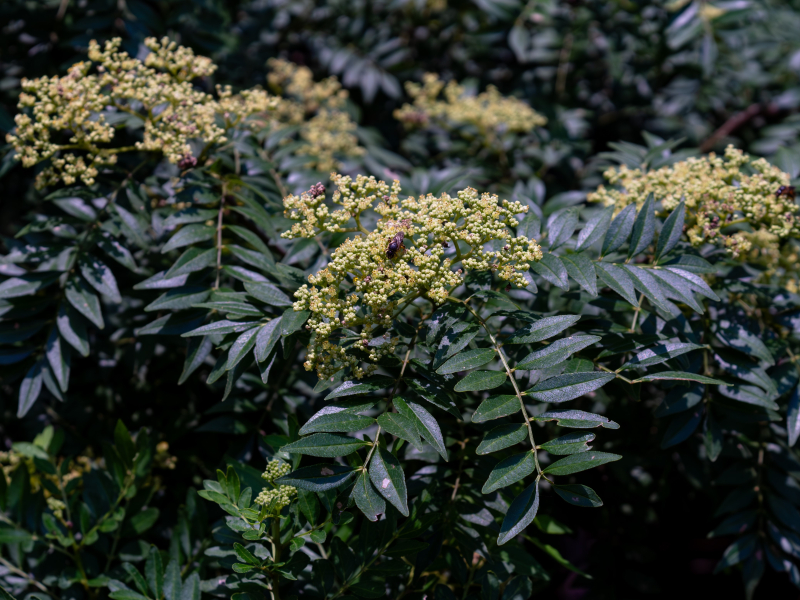
2024.08.09
ムラサキニガナ
ムラサキニガナが咲いています。丘陵地から山地の林内や林縁に生えるキク科の多年草です。名前の通り、1cmほどの紫色の花を下向きにつけます。
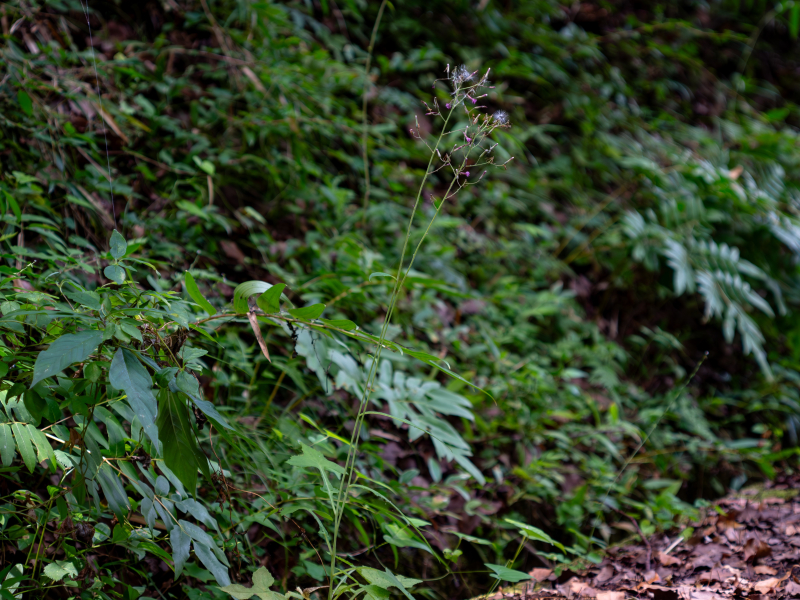
2024.08.06
コオニユリ
コオニユリが咲いています。草原に生える野生のユリです。地下の球根はゆり根として食用になります。食用になるユリは数種類ありますが、スーパーなどで野菜として売られている栽培品のゆり根はほとんどがこのコオニユリを品種改良したものです。
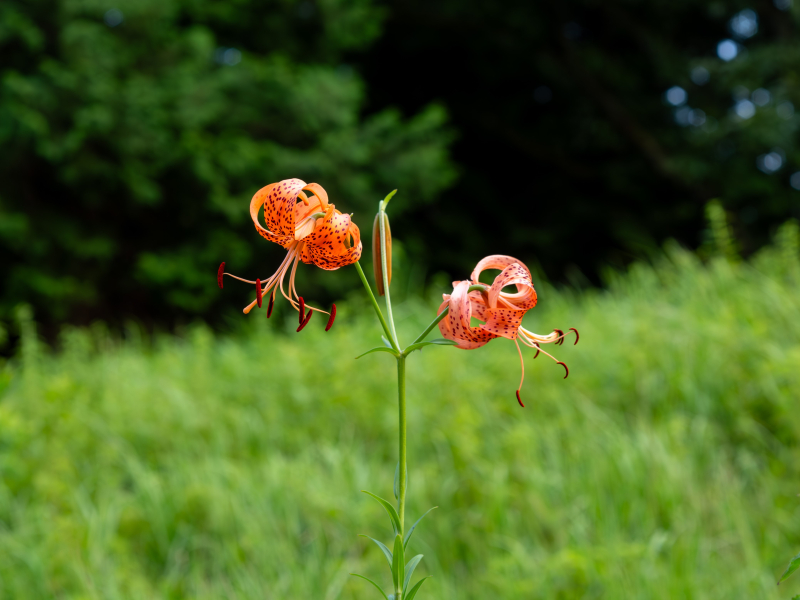
2024.08.02
シオデ
シオデが咲いています。林縁に見られるつる性の草本植物です。花は、緑色で目立ちませんが、花火のような球形になります。若い芽は食用になります。
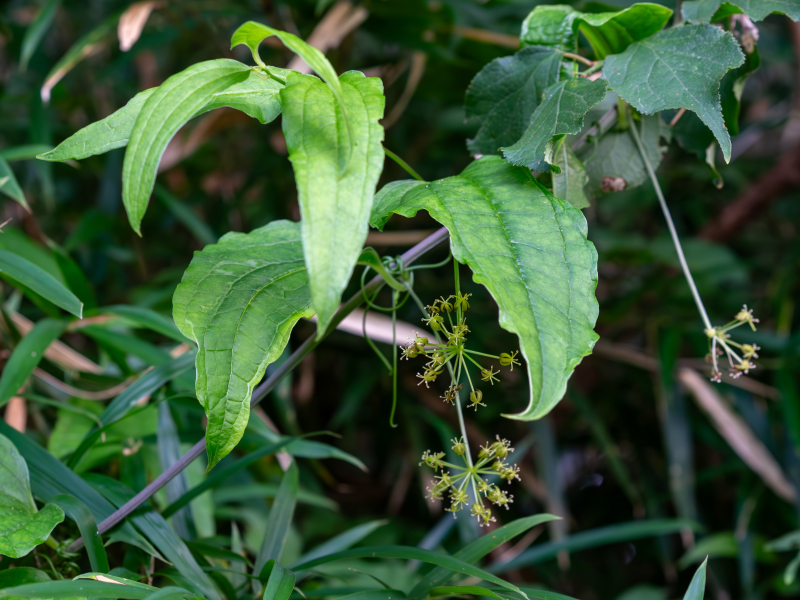
"Shiode (シオデ)" plants are in bloom. They are the herbaceous vines that grow on the edges of forests. Their flowers are green and inconspicuous, but they form a spherical shape that looks like fireworks. Their young sprouts are edible.
2024.07.30
ミズタビラコ
ミズタビラコが咲いています。水辺に生える多年草です。ムラサキ科に属し、近縁のキュウリグサと同様に花びらの根元にはふくらんだ部分があります。近隣の神奈川県や愛知県では絶滅が危惧されています。

2024.07.26
ミツバ
ミツバが咲いています。葉にさわやかな香りがあり、栽培されたものが野菜としてスーパーなどで売られています。野生のものは山地の林縁などで普通に見られます。

2024.07.23
タケニグサ
タケニグサが咲いています。2mほどに成長する大型の多年草です。花は花弁がなく、多数の雄しべが目立ちます。和名は茎が中空で竹に似ていることに由来するという説があります。
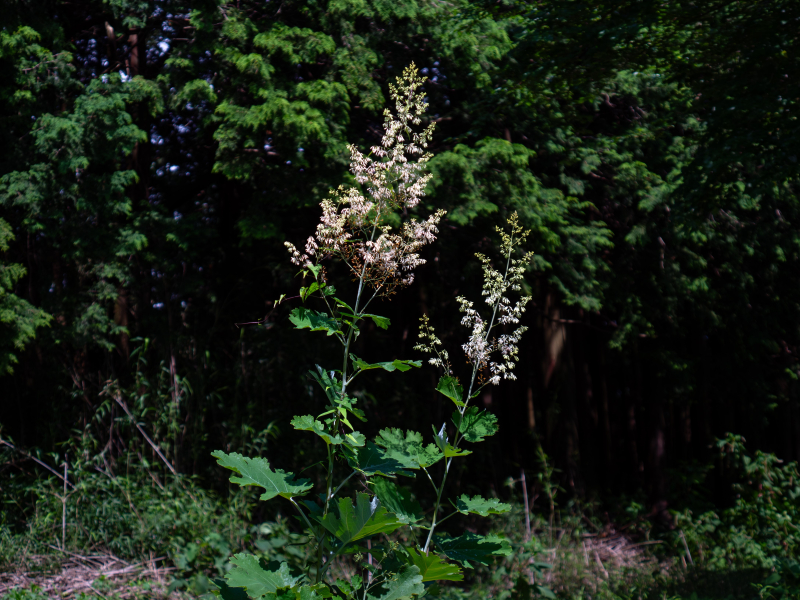
2024.07.19
ショクヨウホオズキ
ショクヨウホオズキが咲いています。北アメリカ原産の帰化植物で、名前の通り、食用になるホオズキです。観賞用のホオズキと同じように、花のあと、がくが肥大し、果実を包みます。栽培されていたものが逃げ出し、野生化しているようです。
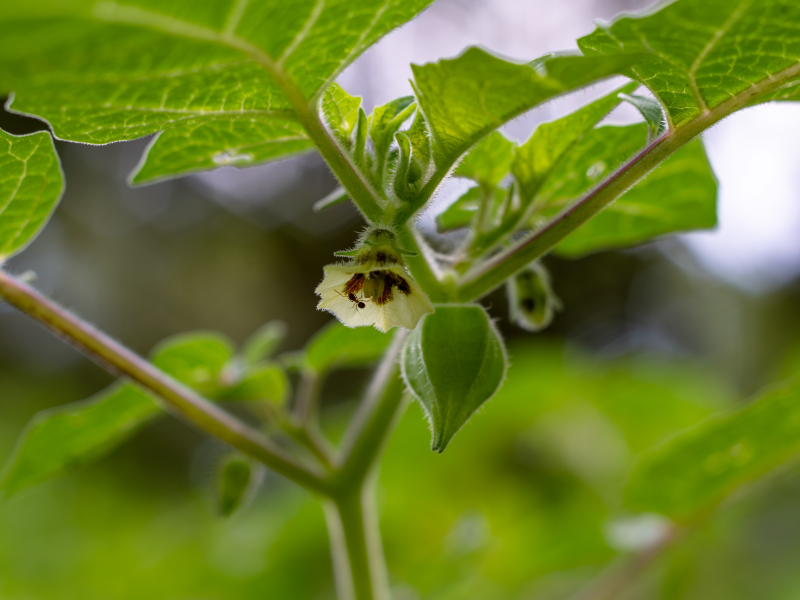
2024.07.16
ネムノキ
ネムノキが咲いています。マメ科の落葉高木で、山地の林縁や土手などでよく見られます。花は多数の赤い長い雄しべがよく目立ちます。和名は眠の木の意味で、夜になると葉が閉じることに由来します。

2024.07.12
オオバノトンボソウ
オオバノトンボソウが咲いています。やや乾燥気味の林床に生えるランの一種です。キャンパス内では林縁で見られます。花は黄緑色で、茎に著しい稜があることが特徴です。


















